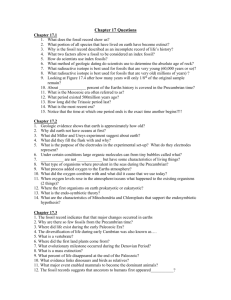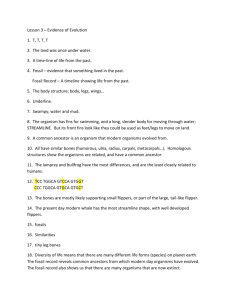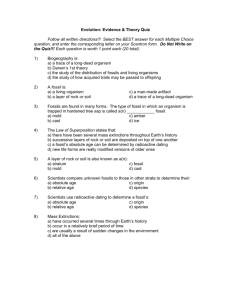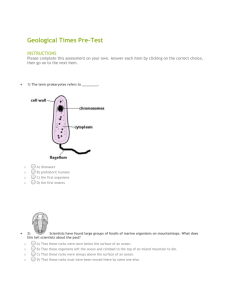Day 9 Fossil Lab 11-12
advertisement
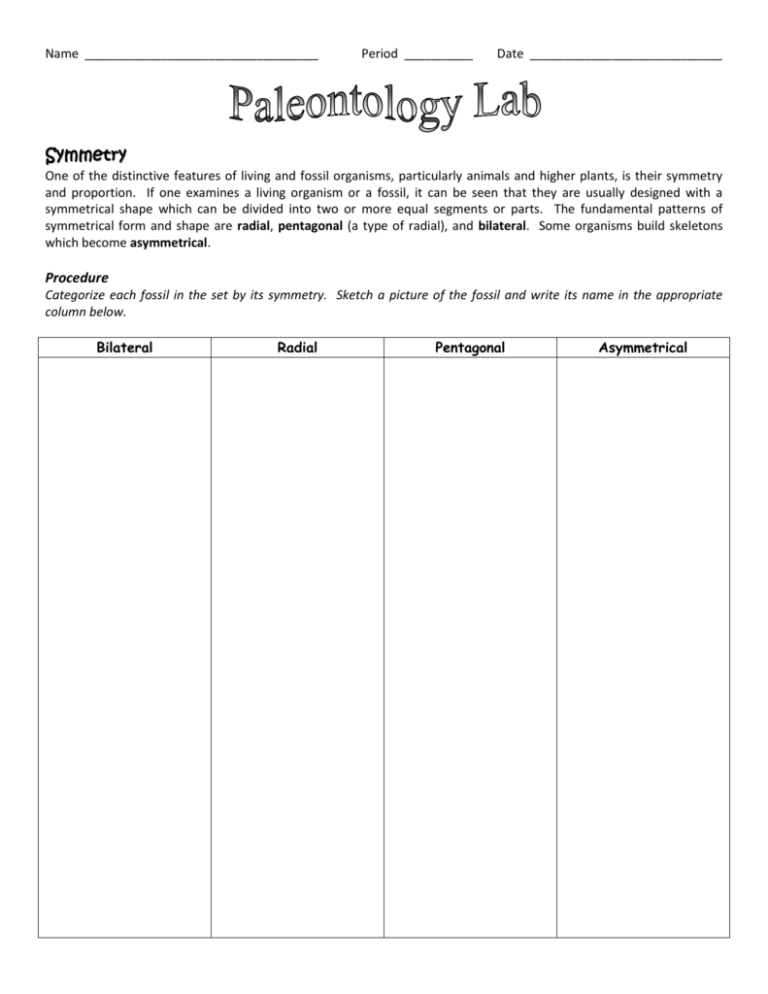
Name __________________________________ Period __________ Date ____________________________ Symmetry One of the distinctive features of living and fossil organisms, particularly animals and higher plants, is their symmetry and proportion. If one examines a living organism or a fossil, it can be seen that they are usually designed with a symmetrical shape which can be divided into two or more equal segments or parts. The fundamental patterns of symmetrical form and shape are radial, pentagonal (a type of radial), and bilateral. Some organisms build skeletons which become asymmetrical. Procedure Categorize each fossil in the set by its symmetry. Sketch a picture of the fossil and write its name in the appropriate column below. Bilateral Radial Pentagonal Asymmetrical Coiling Many fossil organisms have shells that are coiled. The type and direction of coiling is frequently a guide to identifying the shell. If the organism is coiled on an axis which is in a plane, it is termed planispiral. If the axis of coiling is on a spiral, it is termed trochosprial. Another basis of coiling is whether or not the shell coils up like a hose (evolute), or whether the shell expands in width as it grows and in effect “swallows” the first or earlier parts of the shell into later ones (involute). Procedure First, remove all of the coiled fossils from the set. Write their names in the appropriate column in the chart below. Planispiral/Evolute Planispiral/Involute Trochospiral/Evolute Trochospiral/Involute Chronological Arrangement The study of fossils helps us to determine many things about the Earth's past including: (1) the geographic range of fossil species over the Earth; (2) the extent of a species or a group of organisms in time; (3) the types of organisms that lived in communities in various environments; and (4) the changes in the form and nature of organisms through time. Procedure Using the "Fossil Guide" and the "Fossils and Time Chart", arrange the model fossils within the appropriate division of geologic time. Then, answer the questions that follow using the "Taxonomy Chart". 1. You will note that the Paleozoic fossils as a group are different from the Mesozoic and Cenozoic assemblages. What differences do you see? 2. As a group how does the Cenozoic assemblage differ from that of the Mesozoic and Paleozoic? 3. Describe any evidence of change through geologic time you see in any closely related groups of organisms. Pull out all of the organisms from the Phylum Mollusca and put them in chronological order. 4. What similarities do you observe between these organisms? Differences? 5. How have these organisms appeared to change over geologic time? 6. Why are so few organisms preserved as fossils? 7. Differentiate between a chemically altered (petrified) fossil and a cast fossil.

